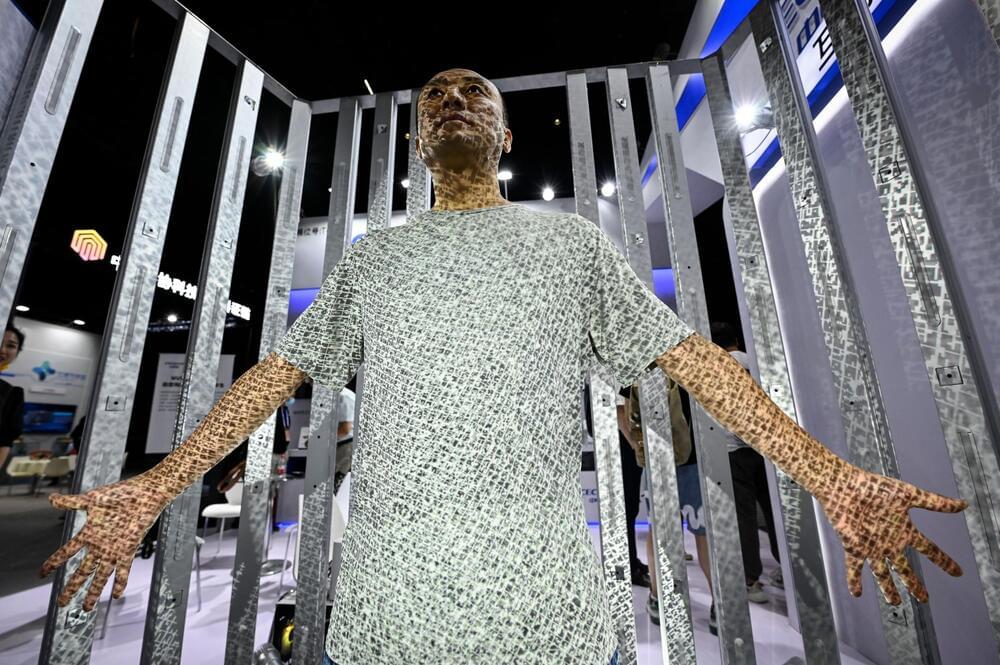Use code coolworlds at https://incogni.com/coolworlds to get an exclusive 60% off an annual Incogni plan. Nuclear weapons are the most terrifying invention of humanity. Could our genius to create such weapons also end them? Today we explore how neutrinos could be used to do just that, fizzling out nukes anywhere on Earth and with no defense. Written & presented by Prof. David Kipping, edited by Jorge Casas. Special thanks to Sam Gregson ( / @badboyofscience) for fact checking. → Support our research: https://www.coolworldslab.com/support → Get merch: https://teespring.com/stores/cool-wor… Check out our podcast:
/ @coolworldspodcast THANK-YOU to D. Smith, M. Sloan, L. Sanborn, C. Bottaccini, D. Daughaday, A. Jones, S. Brownlee, N. Kildal, Z. Star, E. West, T. Zajonc, C. Wolfred, L. Skov, G. Benson, A. De Vaal, M. Elliott, B. Daniluk, S. Vystoropskyi, S. Lee, Z. Danielson, C. Fitzgerald, C. Souter, M. Gillette, T. Jeffcoat, J. Rockett, D. Murphree, T. Donkin, K. Myers, A. Schoen, K. Dabrowski, J. Black, R. Ramezankhani, J. Armstrong, K. Weber, S. Marks, L. Robinson, S. Roulier, B. Smith, J. Cassese, J. Kruger, S. Way, P. Finch, S. Applegate, L. Watson, E. Zahnle, N. Gebben, J. Bergman, E. Dessoi, C. Macdonald, M. Hedlund, P. Kaup, C. Hays, W. Evans, D. Bansal, J. Curtin, J. Sturm, RAND Corp., M. Donovan, N. Corwin, M. Mangione, K. Howard, L. Deacon, G. Metts, R. Provost, B. Sigurjonsson, G. Fullwood, B. Walford, J. Boyd, N. De Haan, J. Gillmer, R. Williams, E. Garland, A. Leishman, A. Phan Le, R. Lovely, M. Spoto, A. Steele, K. Yarbrough, A. Cornejo, D. Compos, F. Demopoulos, G. Bylinsky, J. Werner, B. Pearson, S. Thayer, T. Edris, B. Seeley, F. Blood, M. O’Brien, P. Muzyka, D. Lee, J. Sargent, M. Czirr, F. Krotzer, I. Williams, J. Sattler, J. Smallbon, B. Reese, J. Yoder, O. Shabtay, X. Yao, S. Saverys, M. Pittelli, A. Nimmerjahn & C. Seay. CHAPTERS 0:00 Neutrinos 3:39 Incogni 5:08 Neutrino Factories 9:11 Applications 14:19 My Take 16:17 Outro & Credits #nuclearwar #nuke #coolworlds
Category: military – Page 40
Dr. William Kapp, MD — CEO, Fountain Life — Preventative, Predictive, Personalized Healthcare
Preventative, predictive and personalized healthcare and longevity — dr. william kapp, MD — CEO, fountain life.
Dr. William Kapp, MD is Chief Executive Officer of Fountain Life (https://fountainlife.com/about/), a company focused on transforming the current healthcare system into one that is both proactive and data-driven, enabling enhanced longevity and catching and treating illnesses earlier than ever before, focusing on the detection and reversal of asymptomatic diseases and advancing an entirely new healthcare paradigm.
Dr. Kapp received his B.S. in Biochemistry from the University of Georgia and his M.S. in Immunology and M.D. at the Medical College of Georgia, where he graduated with honors and was inducted into Alpha Omega Alpha, the medical honor society. He attended the Baylor College of Medicine in Houston, Texas for residency in Orthopaedic Surgery and completed his specialty training in 1994.
Dr. Kapp is a board-certified orthopaedic surgeon and a Fellow in the American Academy of Orthopaedic Surgeons, has served on the Board of Directors of the Missouri Orthopaedic Association and has been chair of the Legislative Affairs Committee. Until 2005, he served as flight surgeon in the US Air Force Reserves with the rank of Major.
Dr. Kapp is a dynamic entrepreneur who has founded several healthcare start-ups, ranging from surgical centers and hospitals to electronic health record systems and medical real estate developments.

US ditches LIDAR, develops self-driving stealth tech to tackle lasers
Researchers at the US Southwest Research Institute (SwRI) have developed camera-based autonomous driving tools that can work without deploying technologies like LIDAR and RADAR.
The technology can potentially deliver stealth capabilities for the military while finding applications in space and agriculture.
Modern autonomous driving solutions rely extensively on light detection and ranging (LIDAR) sensors to visualize objects around the vehicle. A software solution then identifies the objects nearby and helps the vehicle’s computer decide whether to halt or slow down.
Pentagon’s $6 BILLION plan for 1,000 AI piloted ghost fighter jets
Five aerospace companies are bidding for the $6 billion contract to produce new unmanned aircraft for the Air Force. The planes will be AI-piloted and will be able to perform dangerous maneuvers.
SXSW introduces military technology event
The event showcased Artificial Intelligence, drones and other forms of innovative technology aimed at boosting the U.S. Military’s defenses.
Army Selects Palantir to Deliver TITAN Next Generation Deep-Sensing Capability in Prototype Maturation Phase
DENVER—(BUSINESS WIRE)—Palantir Technologies Inc. (NYSE: PLTR) today announced that the Army Contracting Command – Aberdeen Proving Ground (ACC-APG) has awarded Palantir USG, Inc. — a wholly-owned subsidiary of Palantir Technologies Inc. — a prime agreement for the development and delivery of the Tactical Intelligence Targeting Access Node (TITAN) ground station system, the Army’s next-generation deep-sensing capability enabled by artificial intelligence and machine learning (AI/ML). The agreement, valued at $178.4 million, covers the development of 10 TITAN prototypes, including five Advanced and five Basic variants, as well as the integration of new critical technologies and the transition to fielding.
“This award demonstrates the Army’s leadership in acquiring and fielding the emerging technologies needed to bolster U.S. defense in this era of software-defined warfare. Building on Palantir’s years of experience bringing AI-enabled capabilities to warfighters, Palantir is now proud to deliver the Army’s first AI-defined vehicle” Post this
TITAN is a ground station that has access to Space, High Altitude, Aerial, and Terrestrial sensors to provide actionable targeting information for enhanced mission command and long range precision fires. Palantir’s TITAN solution is designed to maximize usability for Soldiers, incorporating tangible feedback and insights from Soldier touch points at every step of the development and configuration process. Building off Palantir’s prior work delivering AI capabilities for the warfighter, Palantir is deploying the Army’s first AI-defined vehicle.

War, AI and the New Global Arms Race | Alexandr Wang | TED
Lethal drones with facial recognition, armed robots, autonomous fighter jets: we’re at the dawn of a new age of AI-powered warfare, says technologist Alexandr Wang. He explores why data will be the secret weapon in this uncharted landscape and emphasizes the need to consider national security when developing new tech — or potentially face all-out AI warfare.
If you love watching TED Talks like this one, become a TED Member to support our mission of spreading ideas: https://ted.com/membership.
Follow TED!
Twitter: / tedtalks.
Instagram: / ted.
Facebook: / ted.
LinkedIn: / ted-conferences.
TikTok: / tedtoks.
The TED Talks channel features talks, performances and original series from the world’s leading thinkers and doers. Subscribe to our channel for videos on Technology, Entertainment and Design — plus science, business, global issues, the arts and more. Visit https://TED.com to get our entire library of TED Talks, transcripts, translations, personalized talk recommendations and more.
Watch more: https://go.ted.com/alexandrwang.
Tubeway Army Down in The Park Extended
No copyright intendedAll rights to original owners.

China’s new AI ‘Supermind’ deepens challenge to U.S.
One thing i do like about China. they like to publicly lay cards on table of a project in development an opponent has, that is high level top secret. Just to ruffle feathers, lol. like weather modification stuff. Of course US has, and far superior, its just an open play to tweak someones nose.
China says it is building a new AI-based intelligence platform to track global scientists and hoover up breakthrough technologies for its industry and military.